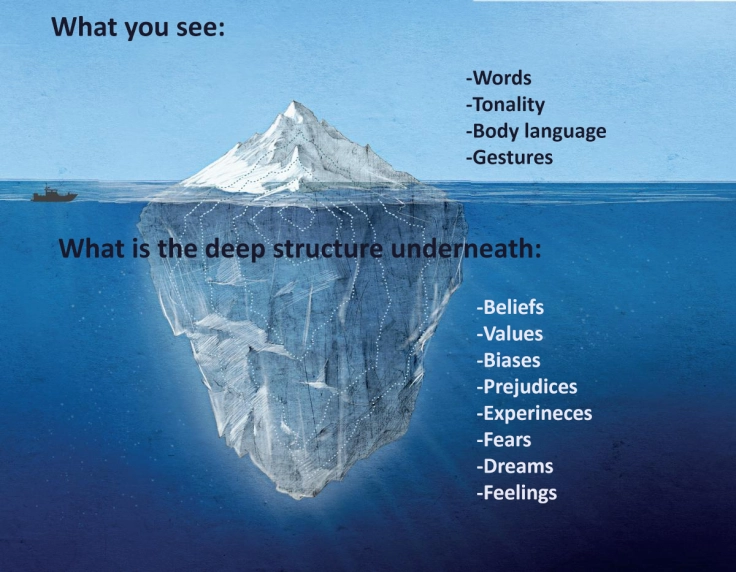Try to imagine that you are traveling in a boat, and in the distance you catch sight of an iceberg, you look at it, and what do you see? A mass of ice. You can’t see that underneath the iceberg is another gigantic mass of ice hidden from our view which maintains it and keeps it solid.

Hemingway’s Iceberg theory in psychology is to say that we only deal with that which we perceive with the naked eye. The rest goes unnoticed, which can be compared with an iceberg. There is a conscious part of the information, but there is also another unconscious part underneath.

The Hemingway’s model says we are like icebergs, with our behavior above the surface visible to others. Things that drive our behavior are hidden to others below the surface. Like moving an iceberg, it can be difficult if not impossible to change behavior without understanding and shifting what is below the surface. It can also take only a slight shift below the surface to have an immediate impact on behavior above the surface.

The whole point is that our goals to change behavior need to start at what drives that behavior, including our beliefs, our values and our thoughts about the world and about ourselves.

For example, I tend to jump to conclusions and hypotheses quite often. I am working on that very hard. I know it is totally wrong, but I can’t help it. I just react spontaneously most of the time. Sometimes I make decisions based on the information I see or have, which is not enough in alignment to total information that exists.

So it is good to be more cautious regarding decision making in general. It is wise to consider not only what we see but also what is underneath the surface of any iceberg, whatever that might be.

enlightening
LikeLiked by 1 person